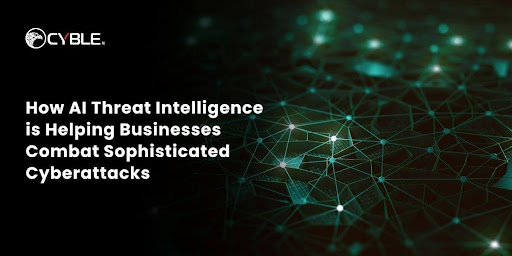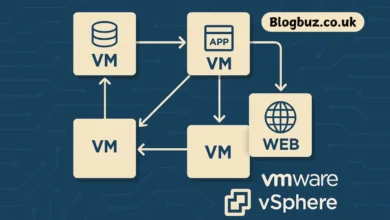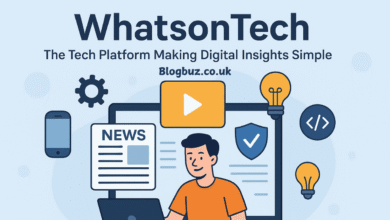How AI Threat Intelligence is Helping Businesses Combat Sophisticated Cyberattacks

The landscape of cyber threats has gotten broader and less predictable than at any time in the past. Hackers are no longer acting as lone actors; many act in organized groups that share tools, data, and knowledge. These threat actors utilize machine learning, AI-driven scripts, and automation to exploit vulnerabilities before most security tools can respond in a timely manner.
Phishing attacks, for example, now employ generative AI to generate near-perfect emails that look and sound legitimate. Certainly, by the time someone recognizes a phishing email as fraudulent, the credentials in question have already been compromised. The changing landscape has prompted organizations to rethink how they collect intelligence and act on it.
This is where AI Threat Intelligence becomes game-changing, as it is able to process such large amounts of threat data and provide organizations real time, actionable insight.
The Distinction of AI Threat Intelligence
Conventional threat intelligence tools utilize fixed data formats – malware signatures, blacklists or previously captured attacks. The problem with this is that these risks evolve at a much faster pace than the static defenses can adjust. AI Threat Intelligence requires no defining of data and learns based on continuous data inputs.
AI Threat Intelligence can draw on billions of data points from a variety of sources (dark web forums, hacked databases, social media), to forecast possible next actions. It does not simply recognize a threat, but rather identifies the intent of the threat.
This means if an AI model generates repeated alerts involving the name of a subject entity on a Cyber Threat Intelligence Platform, the Security Operations Center can be notified before an attack is undertaken. This proactive feature is what distinguishes AI Threat Intelligence from traditional tools.
Real-Time Detection and Quick Response
In the field of cybersecurity, the key factor is speed. When an organization is being attacked, every minute is critical. AI Threat Intelligence will lead to quicker threat detection and response by automating that which would take human analysts hours or days to complete.
Picture a large retail organization that suddenly detects suspicious traffic from multiple IP addresses across a number of geographical locations. An AI system can immediately cross-reference that suspicious traffic with existing data on threat actor profiles, identify the probability that there is an attack happening, and recommend some means of containment — in seconds.
That type of intelligence will enable teams to respond quickly and accurately while reducing the number of false positives and improving the effectiveness of that response by saving time.
Predictive Power: Anticipating the Next Move
The prediction is one of the most formidable features of AI Threat Intelligence. By deriving insights from past data, looking for certain behaviors, and finding out how threat actors operate, the AI can provide a guesstimate of the attack types that a company is most vulnerable to.
One such type of attack is ransomware. The AI can detect very early signs of ransomware attacks, for instance, it can be by noticing the encryption activity of files or the unauthorized access to a network, and then, it would notify the security team before the damage spreads. This can be said to be one of the most important benefits of cybersecurity nowadays where the whole process is switched from mere reactive to proactive.
How Businesses Are Using AI Threat Intelligence
AI Threat Intelligence is being used by businesses in various fields as their everyday tool. Banks and other financial institutions leverage this technology for monitoring fraudulent activities happening in real-time. Hospitals and other healthcare organizations use it to prevent unauthorized access to their patient data. Even small businesses are progressively taking up the AI-powered security measures to overcome phishing and credential theft issues.
Many more companies are seeking the help of Cyber Threat Intelligence Platforms so as to obtain an insight into the threats that are impending. These platforms perform the roles of collecting, analyzing, and visualizing the data from different sources on the web, thus providing the security teams with an understanding of who and why the attackers are targeting them.
Cyble’s Contribution to Improving Threat Intelligence
Cyble offers a Cyber Threat Intelligence Platform that is uniquely able to deliver rich visibility into threat actors’ activities on the surface, deep, and dark web. The platform empowers security teams to assess threats gleaned from only the most important and relevant data, allowing them to prioritize and track threats that matter.
Instead of providing endless data, the platform converts your intelligence into insight — so organizations can focus their defenses in the most critical areas of their environment. Ashlum’s approach synthesizes automation with human expertise, allowing organizations to make faster decisions with much more confidence, without the noise.
This balanced approach is how AI Threat Intelligence should be evolved: intelligent, actionable, and human-aware.
Challenges and the Human Element
It’s a given that technology can’t be perfect at all times. Where the quickness and accuracy of AI Threat Intelligence are unparalleled, it still necessitates the support of expert analysts to decode and implement its results. The AI is quite capable of identifying patterns and irregularities; however, it is the people who can interpret the situations — if an alert is a genuine danger or just an innocent anomaly.
Data privacy issues are yet another problem. With AI systems requiring more and more data for training, organizations have to make sure that the privacy of sensitive information is always guaranteed. Trust in these technologies will be built through the implementation of transparency and ethical AI practices.
Conclusion
In the future, AI Threat Intelligence will keep improving and will become even more autonomous and predictive. The future may see our systems not just detecting and responding, but simulating attack scenarios to assist businesses in preparing in advance.
Think about an assistant for your digital security that is continuously monitoring your organization, learning your weaknesses, and automatically adapting to the latest assault trends. That future is not far off as it is already developing in existing Cyber Threat Intelligence Platforms in use today.
The future of combating cyber threats will require the collaborative blending of AI’s cognitive reasoning and human intuition. Resilience is not about substituting human defenders, but making use of smarter tools for human defenders.




